Is Red Light Therapy Safe and Effective?
Written by:
John Goss
03/21/2021
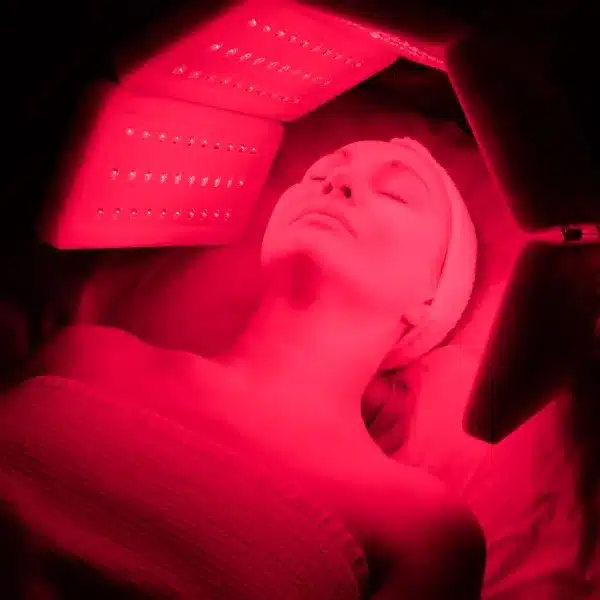
Updated: 04/19/2024
Looking for a different guide? Browse them all HERE.
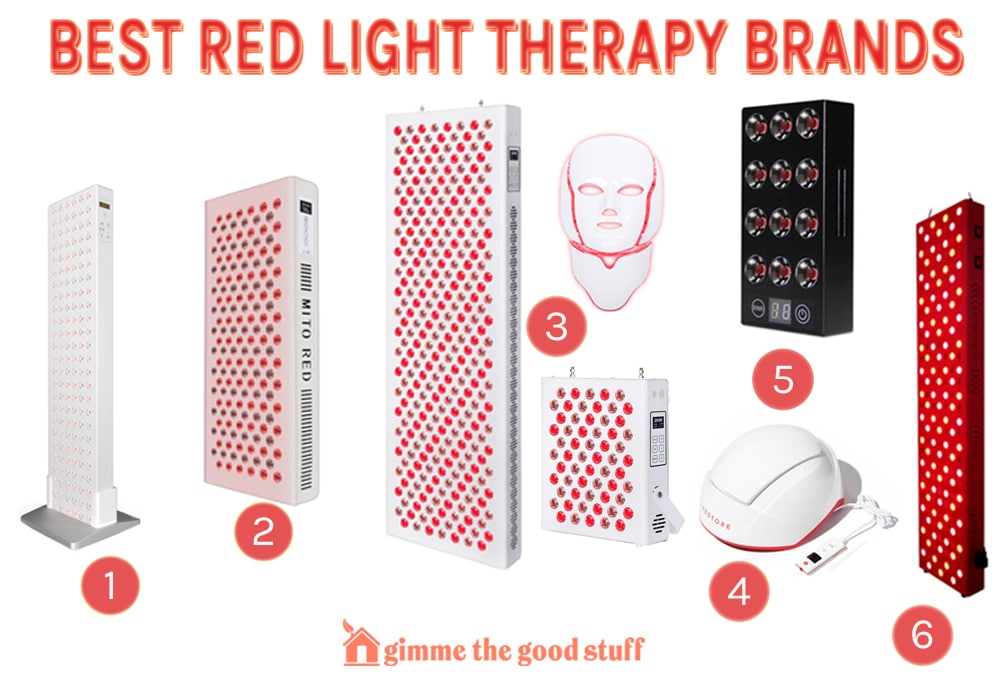
1. Joovv/ 2. Mito / 3. Gimme Red Light / 4. iRestore / 5. Rouge / 6. Gemba
By John Goss

With research provided by Michael Hopkins, PhD.
The term red light therapy (RLT) has caught our attention several times over the last five years or so. According to those championing this treatment, just a few minutes a day under the cool glow of red or near-infrared light can cure almost every type of ailment, while also reversing the signs of aging. Red light devices are now available over the counter, so you can buy your own machine e for home use, saving thousands on expensive spa treatments.
Doesn’t this all seems too good to be true? We decided to find out.
The purpose of this report is to attempt to answer the two big questions we had about red light therapy:
- Does red light therapy actually provide a benefit, and if so, what is it?
- Is red light therapy truly safe, without possible negative side effects?
As always, our goal is to answer these questions based on the actual scientific evidence available, rather than simply parroting the dozens of other websites who have already published guides and reviews of RLT.
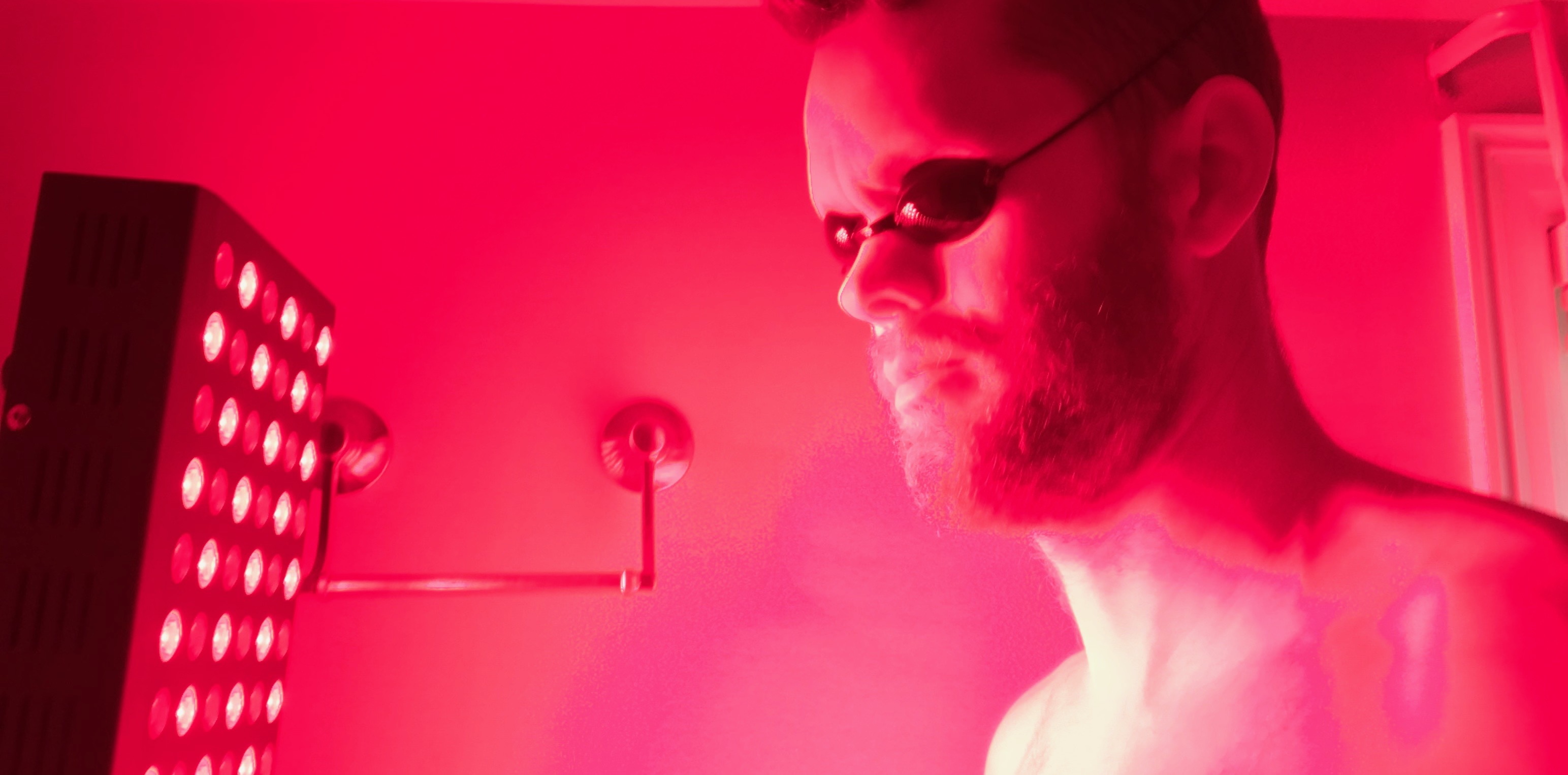
Our Top Pick for Red Light Device
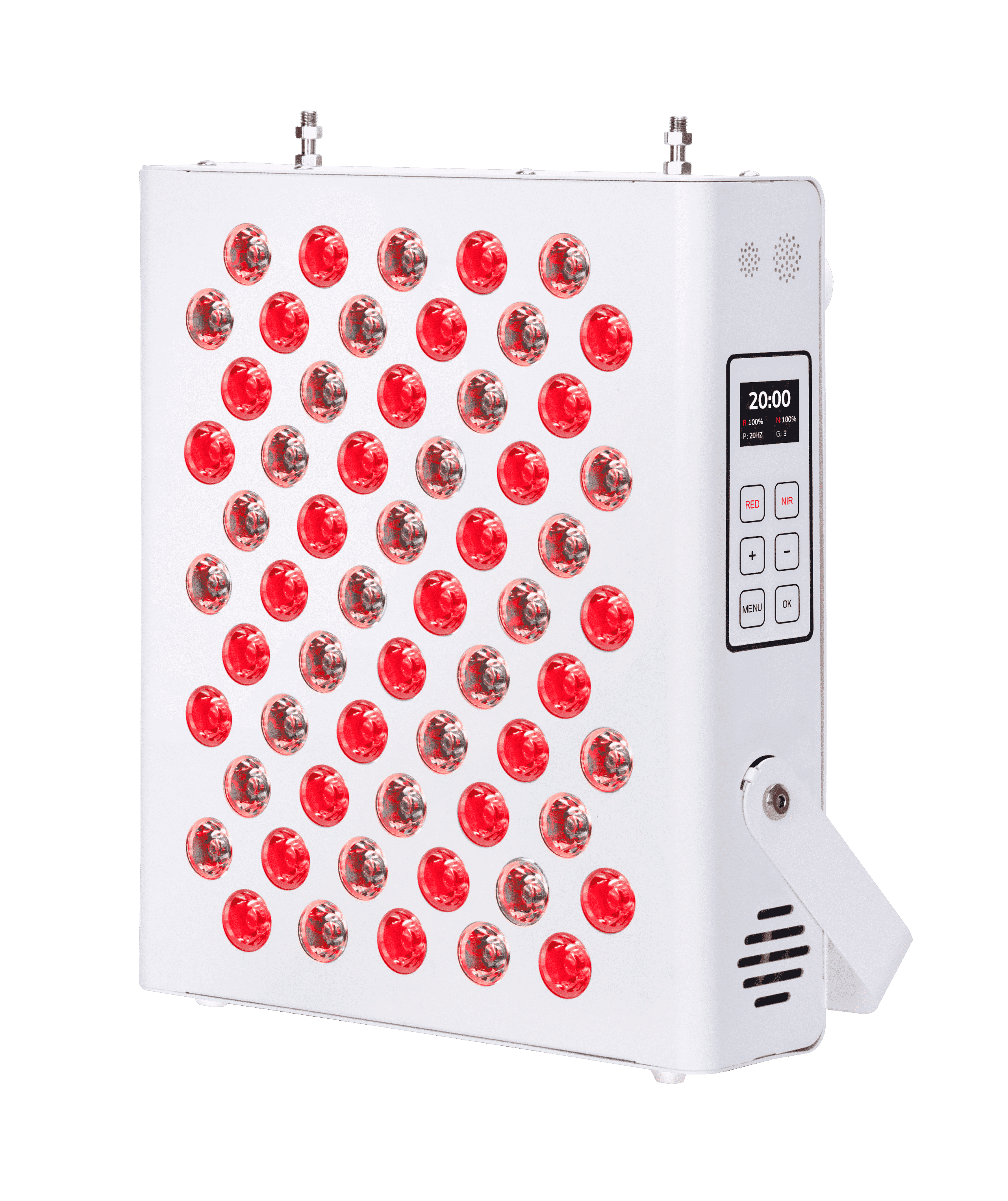
Gimme Red Light | Compact PRO 300 | Red Light Therapy Panels
We are so excited to offer our own line of red light therapy devices. We vetted these lamps to meet the highest standards of red light and infrared light specifications.
Our Initial Discoveries About Red Light Therapy
I was surprised to discover—when I did an initial dig about red light therapy–that the claims nearly every miraculous benefit appear to be backed up with compelling science.
Still, I’m not a scientist, so I called upon someone who is–Dr. Michael Hopkins, PhD. Dr. Hopkins is a natural skeptic and also so thorough in his research that the report he submitted to us about RLT was literally dozens of pages long.
The bottom line: After scrutinizing hundreds of pages of data, Dr. Hopkins concluded that there are definitely well-researched and scientifically demonstrable benefits to RLT. But as usual, it is important that the type of equipment used is independently tested and certified.
So, let’s get into the nitty gritty to help you understand what this therapy can (and cannot) do, how to use it safely, and how to choose the right device.

What is Red Light Therapy?
The essential idea behind RLT is that by exposing our skin to very specific wavelengths and intensities of light, we can stimulate cells into functioning at a superior level.
Usually called photobiomodulation (PBM), red light therapy was invented in the 1960s, and simply put, refers to the application of light energy to treat a variety of skin and soft tissue conditions.
Over the decades, PBM suffered from inconsistent terminology, so you may also see it referred to as Low Level Light Therapy or Low Level Laser Therapy, or Cool/Cold Laser Therapy. Dr. Hopkins suggested that we only refer to it as PBM in this report, but since most commercial models are called red lights, we are going to stick with red light therapy or RLT from here on out.
Nerding Out: How Red Light Therapy Works
(Feel free to skip this part if you find your eyes glazing over.)
At the most basic level, RLT acts by inducing a photochemical reaction into molecules in our cells that are called chromophores. When a photon of light is absorbed by a chromophore, an electron in the chromophore can become excited and jump from a low-energy orbit to a higher-energy orbit. The stored energy from the excited electron can then be used by the system to perform various cellular tasks. Dr. Hopkins adds: “This is actually not such a strange concept; think about the rods and cones in our retinas converting light to neural signals—that’s how we see!”
Anyway, one such chromophore is called Cytochrome C Oxidase (CCO), which is very responsive to specific wavelengths of light in the red and near infrared (NIR) spectrum. When CCO is activated in the mitochondria in our cells, it causes them to produce more energy, allowing them to undergo self-repair and wound healing.
The direct effects of photon absorption include increases in ATP, a brief burst of reactive oxygen species, an increase in nitric oxide, and modulation of calcium levels, thereby inducing the activation of numerous intracellular signaling pathways. These signaling pathways lead to activation of a wide range of transcription factors, which are known to improve cell survival, cell proliferation, tissue repair and regeneration.
Is Red Light Therapy Safe?

The short answer is, yes, RLT is entirely safe.
To be clear: we are not referring to the use of lasers when discussing the safety of RLT, nor are we including infrared (heat) treatments. We have not done enough research to give any opinion about the use of low level lasers at home, and there are safety concerns with the use of infrared (aka heating) pads, including a significant potential for burns.
So, to repeat: our comments on safety and efficacy refer only to therapy that’s administered via light emitting diodes, aka LEDs, which emit non-coherent or asynchronous light.
Dr. Hopkins say this: “I can say without reservation that RLT using red and NIR LED lights from a commercially available, trustworthy manufacturer appears to be completely safe.”
Does Red Light Therapy Work?
The short answer again is yes, but the question we should actually be asking is: “What does RLT treat, and what kind of results can I expect?”
Depending where you look, you will find claims that RLT is a veritable panacea, with benefits ranging from skin health (wrinkles, elasticity/collagen production, hyper-pigmentation, rosacea/acne, psoriasis) to wound healing, arthritis/joint pain treatment, hair regrowth, eyesight improvement, and even improvements in brain activity and mental health conditions, such as PTSD, depression, and traumatic brain injury.
The reality is that there are data to back up virtually all of these claims. After a rigorous review of the literature, we believe that RLT actually may indeed be an effective treatment for most, if not all, of these conditions.
Still, there are several important questions we considered when coming up with our recommendations for specific red light devices, including:
- What are the parameters necessary to achieve real results in a clinical or laboratory setting, versus what you can achieve with a consumer device in your home?
- How important are individual differences between users themselves (including skin tone)?
When it comes to RLT, the data suggest that the beneficial effects often correspond to the degree to which there is some sort of damage or insult to the tissue in the first place. In other words, you’re more likely to see a dramatic improvement in skin elasticity or wrinkle reduction in skin that is already sagging and has wrinkles, versus young skin with only some minor fine lines.
As long as we approach RLT with the understanding that results will vary and that you’re more likely to get dramatic results if your goal is to treat damage or injury, Dr. Hopkins enthusiastically recommends that you try RLT. (Since researching this article, he now uses his device from Mito every day.)
Red Light Therapy=Exercise

Dr. Hopkins encouraged us to think about RLT in much the same way that we view moderate cardiovascular exercise: we know that exercise benefits us in countless ways, all of which have been well-documented in controlled scientific studies. We also know that we aren’t damaging ourselves by engaging in moderate cardio. Finally, we’ve accepted that the precise parameters around how much is optimal in order to achieve a specific benefit is largely uncertain and varies a great deal from person to person.
While this analogy to physical fitness may sound anticlimactic or disappointing, Dr. Hopkins provided three reasons why he feels it’s actually remarkable:
- First, RLT is easy–much easier than working out!—as long as you have the financial means to purchase a quality device.
- There are tons of studies demonstrating effective RLT treatments in the laboratory. Therefore, you can model your dosage/regimen after a successful research investigation and be reasonably confident that you will get positive results.
- Even if you don’t experience specific results to the extent that you were hoping, RLT has the potential to provide many different benefits. You’ll probably notice some other unexpected improvements—just like you will if you start a fitness regimen.
What Does Red Light Therapy Treat?
So, we’ve established that RLT is safe and that it is beneficial in a range of ways.
We asked Dr. Hopkins to separate legitimate uses of RLT from the false claims. Fortunately, he found many medical and cosmetic conditions for which there is sufficient scientific evidence to endorse RLT as a treatment.
In some cases, Dr. Hopkins even found enough information about appropriate dosage and treatment parameters to provide specific instructions for use. More on this below.
Here is a non-exhaustive list of what RLT can is purported to treat:
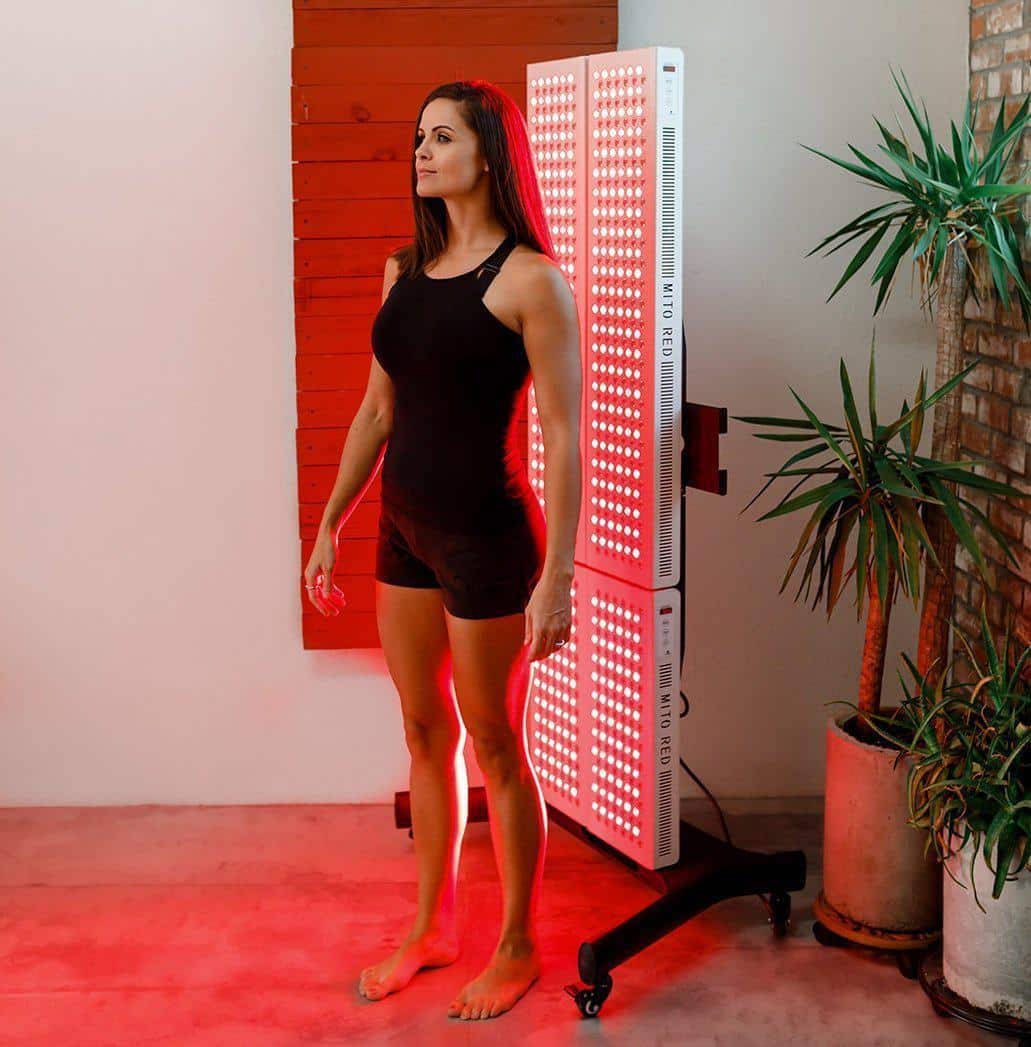
- Wrinkles and elasticity/collagen production
- Cellulite
- Hyper-pigmentation
- Rosacea and psoriasis
- Acne
- Wound healing
- Arthritis
- Muscle strength
- Gum health
- Hair regrowth
- Eyesight
- Seasonal affective disorder (SAD)
- Anxiety
- Immune system boost
- PTSD
- Depression
- Traumatic brain injury
- Cancer
- Carpal tunnel syndrome
- Neuropathy
This list smacks of too-good-to-be-true, but the reality is that at minimum there are some data to back up most of these claims; many of these conditions actually have a wealth of scientific support.
The big challenge is defining the parameters necessary to achieve these results in a clinical or laboratory setting versus what you can achieve with a consumer device in your home.
Until we have controlled studies comparing dosages in order to define optimal parameters, there is simply no way to guarantee specific results for most of these conditions.
This may seem like bad news for those seeking a guarantee of 20 years off their skin with a home RLT device. But Dr. Hopkins says that RLT “can safely be used for many conditions, and users can replicate the dosage from published studies to optimize their own results with an expectation of improvement and no risk of harm.”
Dr. Hopkins’ bottom line is that superficial skin issues such as wrinkles, discoloration, rashes/eczema, bruising, scabs/scars/scrapes, fine lines/wrinkles and elasticity, as well as muscle and joint pain are good candidates for at-home RLT machines. Deeper tissue effects (e.g., anything brain-related such as PTSD, Alzheimers, etc.) would be smaller simply due to the fact that OTC machines are necessarily quite weak compared to the lasers often used in clinical trials.
At the end of this post you’ll find Dr. Hopkin’s instructions on how to use red light therapy devices for various conditions.
NEW! Red Light Clothing
Here’s something cool: Lumiton clothing is made of a technology that turns sunlight into red and near-infrared light. Use code GIMME5 for 5% off everything on their site.
How Do I Find a Red Light That Works?
As with many health and wellness trends, the excitement over all the (legitimate) health benefits along with the relative safety has led to an explosion of RLT devices on the market for at-home use.
There are manufacturers that are doing things correctly and have all of their products tested in reliable independent testing facilities. But there are a lot more companies trying to grab some of the profits in this trendy market by making wild claims that are not (yet) backed by research. Many companies also have no credible test results.
The essential criteria in order to determine whether a RLT device qualifies as Good Stuff include:
- the specific wavelengths of light that are used
- the illuminance (also known as power density) of the device
- the electromagnetic fields (EMF) produced
- the amount of flicker produced by the device (these last two should be as close to zero as possible).
Finally, Dr. Hopkins evaluated the credibility of the manufacturer, which will depend on several factors including transparency of specs and communication, FDA approval/clearance, and independent testing/validation by a third-party.
What about Blue/Green/Amber Light?
Acne seems to be the one skin condition that specifically responds better to blue light than red. This is thought to be due to the antimicrobial/sterilizing properties of blue light. Seasonal Affective Disorder (SAD) also is likely better helped by blue, green, and yellow light than it is by red light. Unfortunately, blue light is that it can also damage the skin, and may disrupt circadian processes, damage retinal cells, and more. For this reason we don’t recommend using blue light at home.
What Makes a Red Light Good Stuff?
What follows are what Dr. Hopkins considered when deciding which of the many brands of red lights would qualify as Good Stuff.
Energy Output: Illuminance & Radiant Exposure
One of the most important factors in deciding on a red light therapy device is the energy output. The first thing to understand here is that the “strength” of your LED device is measured in mW/cm2, which is also called “illuminance” or “power density.”
To calculate the dose, you take the illuminance and multiply it by the number of seconds of exposure to your skin. One watt is the same as one Joule per second, so you might see a light therapy device reporting Joules/cm2 rather than milliwatts (mW)—this refers to the total radiant exposure from that device.
Here’s an example: Suppose you have a red light device with a measured illuminance of 50mW/cm2 at a distance of 6 inches. If hold this device 6 inches from your face for 60 seconds, you receive .05 Watts of energy per square centimeter (50mW/1000 = .05W), times 60 seconds of treatment time (.05 X 60), for a total of 3 Joules per cm2.
Based on the studies that Dr. Hopkins read, the range of effective treatments is typically reported from around 10mW/cm2 to 200mW/cm2, with each dose ranging from about 1Joule/cm2 to 50joules/cm2.
So how frequently and for how long you should expect to continue treatment in order to see results? While results will vary depending on the condition being treated, most data suggest that you’ll want to use an at-home device on affected areas several times a week for at least a month.
The Trouble with Measuring Illuminance
Dr. Hopkins found that the “industry standard” for measuring illuminance is flawed. His explanation about the flaws are a page long, so I won’t post it all here, but the basic problem is that widely-available Solar Power Meters are designed to measure the power density of white light. Because they absorb across a broad range of wavelengths occurring naturally in sunlight, there a large differences in sensitivity for different wavelengths.
Red light devices sold to consumers will have artificially inflated illuminance data because they are being measured with a Solar Power Meter rather than a Laser Power Meter (the latter being prohibitively expensive). The bottom line here is that you always want to look for brands that report third-party testing from an independent laboratory. Alternatively, if a brand explicitly states that they have corrected this industry-wide issue to report accurate power density levels, we would consider this brand potential Good Stuff.
The Most Effective Wavelengths
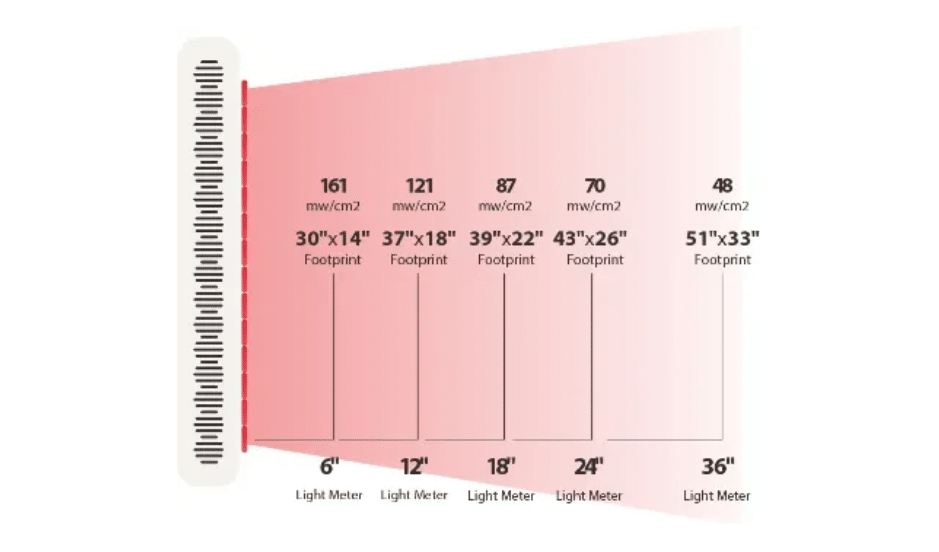
Dr. Hopkins found that the wavelengths known to produce benefits are 630, 650 (visible red light), 830, and 850 (near infrared).
Visible red seems to be effective in activating cellular energy, detoxifying cells, and building new arteries. Generally, red 630 has been tested more for skin-tone (collagen and elastin) while 660 may better influence ATP production.
The optimal therapeutic window for red light therapy is between 600 and 1100nM (Rojas & Lima 2011). This is because light below 600nm wavelength does not generally penetrate living tissue, and light above 1100nm wavelength (infrared) is rapidly absorbed by water.
It’s also worth nothing that near-infrared light (NIR) penetrates even more deeply into the tissue than does red light, and thus more effective at treating conditions below the skin—such as joint pain in the back, neck, and hip joints (where the synovia are deeper), traumatic brain injury, or any other conditions that go below skin deep.
Bottom line: When choosing your RLT machine, try to get one that matches the biologically active frequencies listed above within +/-15nm. If the frequencies are not matched, Dr. Hopkins recommend a device with a greater distribution of frequencies, rather than just one for red and one for NIR.
Red Light Therapy for Different Skin Tones

The FDA approval for over-the-counter red light therapy devices is limited to people with light skin tones. This means that, in general, the lighter your skin is, the more effective RLT will be for you because the light can penetrate deeper in skin with less melanin. Melanin will absorb a considerable amount of the light before it can reach deeper cells.
How Much is Enough? Determining the Correct Dosage
RLT, like the vast majority of naturally occurring phenomena that exert biological effects, follows a hormetic arc of efficacy. Hormesis refers to dose-response processes in which a low dose can produce the opposite effect of a high dose. In other words, there is a dose range that will produce positive outcomes up to a certain level, at which point increasing the dose further will not continue to be beneficial but rather, will be harmful (examples of this: heat, salt, oxygen, stress, etc.).
The big trouble with RLT is that the optimal parameters have not been established. That said, there is a very large range of light intensities that have been shown to be effective for a wide variety of conditions. The data all suggest that the threshold for shifting from benefit to harm is higher than any at-home light therapy device will be able to achieve when used as intended. In other words, the more powerful, the better–and you do not have to worry about it being too strong.
The best RLT devices available for at-home use will achieve an illuminance of at least 50mW/cm2 at an appropriate distance for use– usually at 6 to 12 inches away. If you opt for a flexible, form-fitting sheet like the Celluma Pro or a helmet like the iRestore the illuminance may be lower because the item is coming in contact directly with your skin.
Effective dosages range anywhere from 1Joule/cm2 up to around 150 Joules/cm2. The majority of studies demonstrating positive effects cluster around 10-100 Joules. One study looking at RLT to improve runners’ performance found that a single treatment of 30 Joules was more effective than either 15 or 60 Joules (Dellagrana et al., 2018).
FDA 510 Clearance
In order to get FDA approval, a product must provide some kind of health benefit or treat a specific condition, and the benefits of the product must outweigh any risks associated with using it.
This process involves substantial safety and efficacy data by way of peer-reviewed studies and clinical trials; is very time consuming and costs millions of dollars. There is a much faster and cheaper version, though, for low risk medical devices. This is called 510K Clearance, whereby companies must only prove that their device is equivalent in safety and function as a previously approved device with similar characteristics (called a “predicate device”).
This 510k Clearance process is important when it comes to RLT because new devices have to match the specs of approved predicate devices in order to be cleared. There are several different possible wavelengths that might be more or less effective for treating many different conditions, but this system encourages “copy cat” wavelengths and device styles, rather than novel and possibly more effective wavelengths or devices. Still, you of course want to make sure any red light therapy device you purchase has received FDA 510 Clearance.
Pulsed Versus Continuous Wave
You will find that several manufacturers proudly state that their device uses “pulsed” light. This is just marketing, and can be ignored if you’re using an OTC red light device.
The only reason you’d want to use pulsed rather than continuous light energy is in the case of a laser or other extremely intense light. This is because pulsed light allows you to deliver a more powerful beam without damaging your skin by ensuring that the heat has time to dissipate between pulses. But this simply does not apply to red light therapy devices for home use.
Can RLT Cure Covid-19?
Dr. Hopkins feels that there is great potential for red light therapy to help treat not only COVID-19 but any number of other potential pathogens. There are already clinical trials underway to explore the efficacy of such treatments .
Dr. Hopkins concluded that it is “absolutely reasonable to suppose that PBM can and will be an effective adjunct/alternative treatment for COVID-19 and other infectious diseases as more research is conducted. It is not clear where at home LED devices will fall in terms of efficacy but it is safe to assume that the benefit would be greater than zero and certainly not harmful.”
So let’s cut to the REAL bottom line: Which red light therapy lamps are Good Stuff and which are not?
Good Stuff
Gimme Red Light
We are so excited to offer our own line of red light therapy panels. We vetted these panels to meet the highest standards of red light and infrared light specifications.
Celluma LED
These are extremely pricey, flexible, wrap-around products that address spot treatment and full-body treatments. Prices start at $300 for a tiny unit, and go all the way up to $10,000 for a full-body wrap.

iRestore
These are products specifically designed to address hair loss/restoration and have pretty incredible reviews. Prices range from $695 to $1,195.
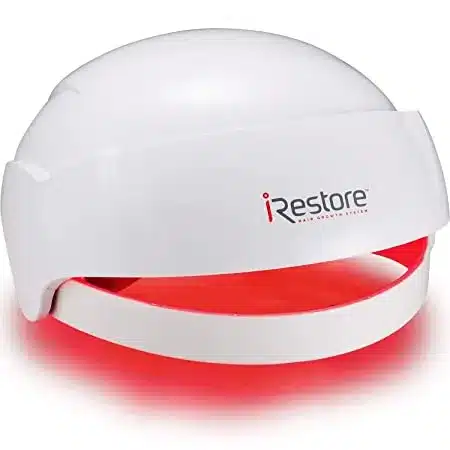
Joovv
Joovv’s lights come in 660 and 850 wavelengths and with third-party testing and certifications. Use code GIMME gives you $50 off your first purchase (excluding generation 2.00). Joovv’s prices range from $545 all the way up to $8,395 for a wall system that can target your whole body.
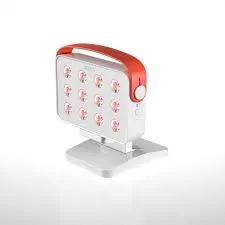
Mito Red
This is the red light therapy device that Dr. Hopkins began using while doing the research for this guide, and he’s already seen results on his skin (less wrinkling/sagging). Mito has independent, third-party certifications, and they offer a variety of lamps that have the proper wavelengths supported by research (630, 650, 830, and 850). Prices range from $249 to $3,000.
If you’re enjoying this guide, sign up for our Newsletter to be alerted when we publish or update our Safe Product Guides.
Okay Stuff
These brands are likely to be effective, but are only in the Okay Stuff category because: a) Dr. Hopkins was unable to confirm their efficacy as of this writing and/or b) they lack the proper certifications. For that reason, we recommend the brands above instead, but as we get more information we may move some of these brands up into the Good Stuff category.
- Platinum LED
- Red Light Man
- Life Giving Store
- Solas
- Red Alternative
- QuasarMD
- Revive DPL
- Red Therapy
- Red-light Rising
- Pulsaderm
Sneaky Stuff
The following brands were unable to produce enough information or provided us with inadequate answers to our questions.
- Lightslim
- Mytochondria
- Vevazz
- Hooga
- Ryumei
- Wolzek
- DGAYO
- Angel Kiss
- Flawless Bar
- Infra Relief
- Quantum Rejuvenation
- TendLife
- Project E Beauty
- Nova Red
- Burer
- ChoiceMMED
- AUSPA
- SGROW
- Norlanya
- Trophy Skin
- Figerm
- YokPollar
- Luminescence
Note: Hooga wrote to us complaining about their designation as Sneaky Stuff. Here is what we sent back to them: “We marked Hooga as Sneaky Stuff because irradiance measure reported on website says over 100mw/cm^2 and doesn’t give any distance–so presumably that is at 0cm. Irradiance should be given at a stated distance from the source- with these products usually 6-12″ away. Also, Hooga doesn’t have FDA clearance. Lastly, they have only 2 wavelengths of light and the Good brands generally have 3 or 4 wavelengths. If you want to update your website to provide source data and explain the instruments used to obtain your results, then you should do that for transparency and to be removed from Sneaky (but still likely only Okay Stuff).”
How to Use Your RLT Device
If you’ve purchased a device and want to know specifically how to use it, here are Dr. Hopkins’ recommendations. For all the conditions below, we’ve cited at least one clinical paper with specific data on dosage/treatment parameters, but please note that all of the conditions listed below are supported by multiple published clinical trials.
Wound Healing
- Use 633nm light at 96J/cm2 dosage immediately after surgery, 48-hours later and 2 times the following week. (Studies shown that mean healing time was 13.5 days versus 26.8 days for untreated patients. Trelles & Allones 2006–taken from Ablon 2018 review.)
- Use 830nm at 55J/cm2 plus 633nm at 98J/cm2 following surgery and repeated at 72 hours and again 3 times more during the following week. (Studies found that exudation, crusting, pain, and edema resolved roughly 50% faster in the treated group. Trelles et al., 2006- taken from Ablon 2018 review. You can also see extensive review of in vitro and animal models by Abreau Chaves et al., 2014.)
Pain
- Use 810nm, 27 J/cm2 (12 sessions, with 20-minute treatments each time). When combined with physical exercise, this improved chronic lower back pain 12 weeks after treatments. (Djavid et al., 2007).
Superficial Skin Appearance (age spots, wrinkles, smoothness, elasticity, etc.)
- 633nm (96 J/cm2) LED light administered as 20-minute treatments three times weekly for three weeks. In a study, this resulted in reduced wrinkles and fine lines as well as smoother skin as assessed by treatment-blind third party. (Bhat et al., 2005).
- Red light (611-650nM) resulted in significant improvement of skin as measured by complexion, feeling, roughness and collagen density as measured by ultrasound compared to controls. (Wunsch & Matuschka 2014).
Psoriasis
- 830nm, 60J/cm2 and 633nm,126J/cm2 during two weekly 20-minute sessions for 4 to 5 weeks with two days between sessions. Researchers found 60% to 100% clearance of psoriasis in treated patients. (Ablon, 2010).
Hair (Re-)Growth
- Double-blind control study (Lanzafame et al., 2013) found a very clear significant effect of red light (655+-20nM) on hair growth in men compared to placebo.
Muscle Recovery Post Acute Exercise
- Single treatment of 630nm at total energy density of 24Joules/cm2 following arms workout significantly reduced muscle soreness, loss of strength,h and loss of range of motion up to 96 hours after muscle-damage-inducing eccentric work out in 17 healthy male volunteers. (Borges, L.S., Cerqueira, M.S., dos Santos Rocha, J.A. et al.)
Retinal Health (Eyesight)
- Researchers found the 670nm light had no impact in younger individuals, but in those around 40 years and over, significant improvements were obtained in both color contrast sensitivity as well as low light visual acuity. (Shinhmar et al., 2020).
Stay sane!


John, Certified Holistic Health Coach
Note: This article contains affiliate links or sponsored content, which means that if you make a purchase, we may earn a commission. We only recommend products that meet our strict standards for non-toxicity and that we use (or want to use!) ourselves. Thank you so much for supporting the brands that make Good Stuff!
Enjoying this guide?
Join 60K families who rely on our free guides on everything from milk to mattresses! Sign up to get $5 off your first order, access to our ultimate Clean Products Cheat Sheet, and ongoing exclusive access to coupon codes and promotions. Our weekly newsletter is filled with well researched tips and tricks to live a toxin-free lifestyle.
Related Posts
Best Prenatal Vitamin Guide
What to Do in Dry January: An Idea for Every Day of the Month
Best Probiotic Brands Shopping Guide
What Are the Best Multivitamins?
-
So the Celluma IPRO isn’t strong enough to use on pulsed? Always go with continuous?
-
Do you recommend Vital Redlight? I saw this company and liked their products but I did not see them any lists?
-
Hello,
Thank you for the article! I was wondering specifically if red or near infrared was safe to use for individuals with hyperthyroid/Graves disease. I have two red light devices, one has red and infrared, and the other has red, amber, and infrared. I noted on one of them a warning for those with “thyroid issues”. I can find several articles stating that there is evidence that it could be helpful for *hypo*thyroid, but my problem is hyper. Seems like if it stimulates an underactive thyroid, that it would be bad for one that is already overactive. But I can’t find any info out there, not even from the manyfacturers. Any information you could come by would be much appreciated!
Thank you,
Laura -
Hi,
I appreciated this info – thank you! I was using a stand-inside red light pod at a tanning salon. Do you know how safe and effective these are? I imagine they just have FDA approval if they’re used on a salon? -
Thank you for this!!
Would you suggest the larger original mito or going with the mid size of the mito at the same cost?
We are using for general aches and skin.
Thanks so much for your thoughts!
-
I meant mid size of the pro series. Sorry!
-
Our rule of thumb is that more coverage is better than less. Modern life puts a premium on time, so if you have a smaller lamp and want to expose twice as much skin to it as a smaller lamp can do, then it takes longer because you need to move it around. A full body exposure can be done in the same time as a facial exposure if you have the largest lamp array rather than the smallest.
-
-
Hi,
You mentioned that “pulsed” light is just marketing, and can be ignored if using an OTC red light device. Does it mean I should just stick to the continuous mode on the Celluma?
-
The only reason you’d want to use pulsed rather than continuous light energy is in the case of a laser or other extremely intense light. This is because pulsed light allows you to deliver a more powerful beam without damaging your skin by ensuring that the heat has time to dissipate between pulses. But this simply does not apply to red light therapy devices for home use. Because you are not using a laser it would make sense that the pulse may not be necessary.
-
-
Can you explain how you would use it for eyesight? Which leads me to my second question, are goggles always recommended when using these units or no?
-
I use it for eyesight by placing the lamp very close to my face with my eyes shut…no goggles…10-15 minutes. There is no evidence that the spectrums of light used by these lamps will damage eyes. The goggles are for folks who may find the intensity of light to be a lot to take, even with closed eyes.
-

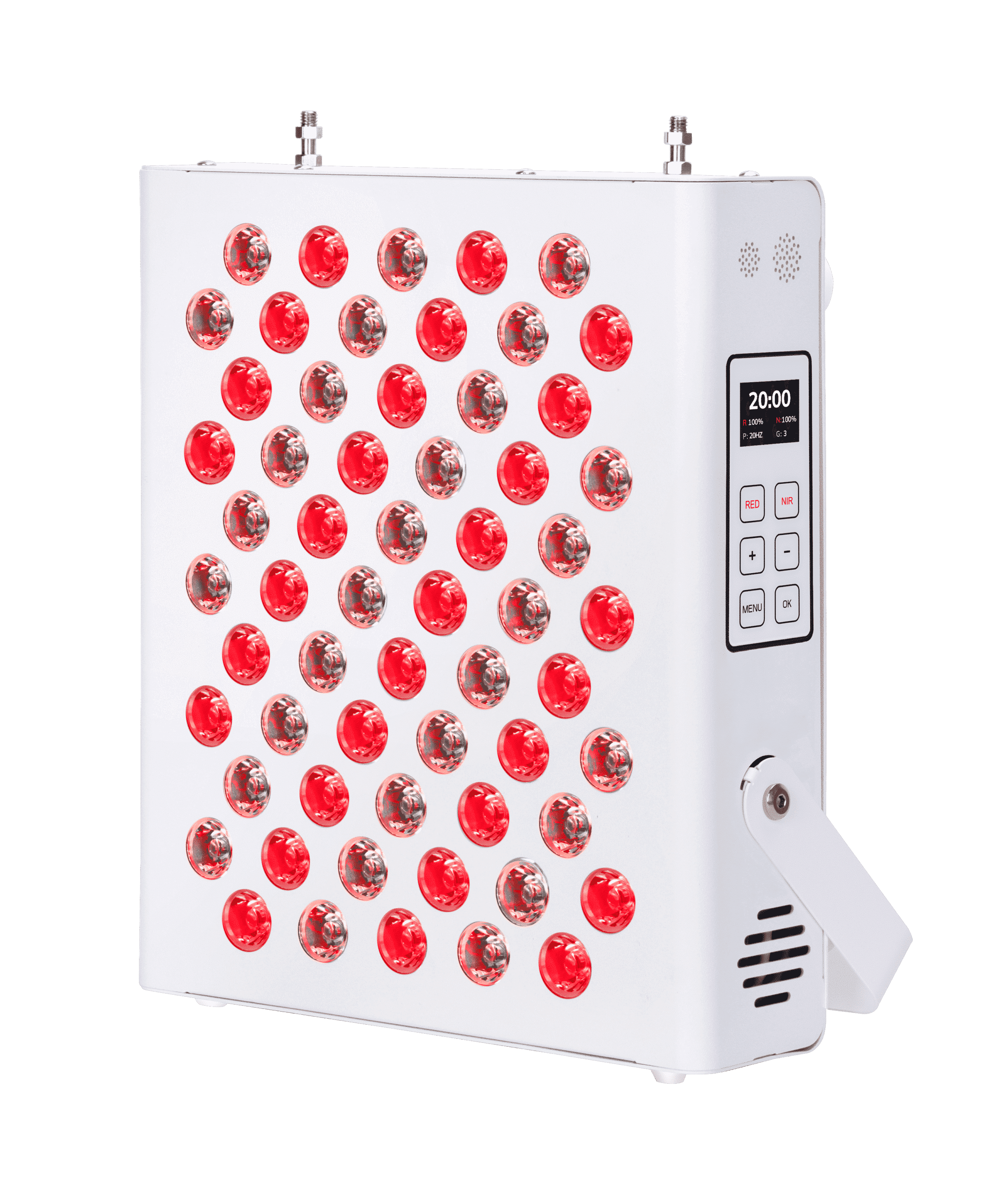
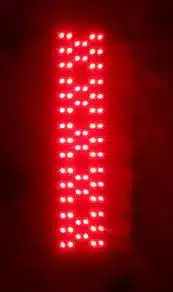
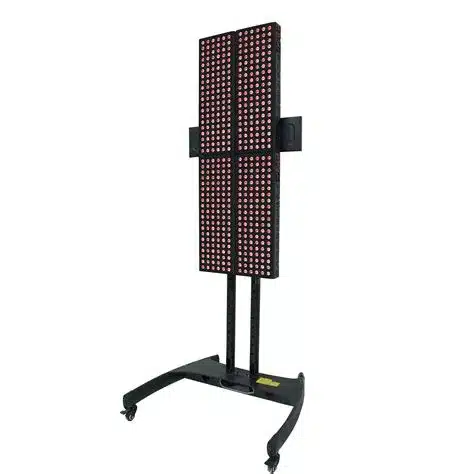




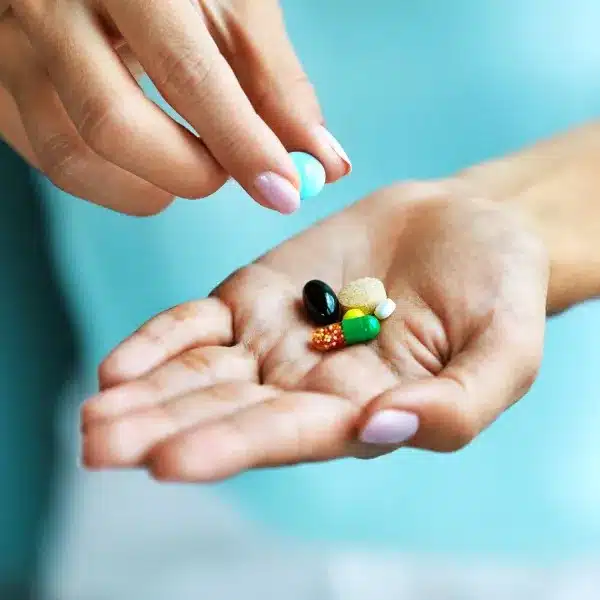
Leave a Reply
You must be logged in to post a comment.